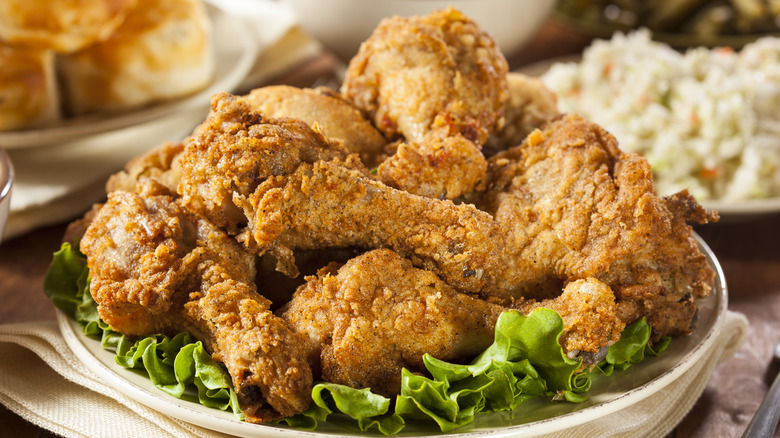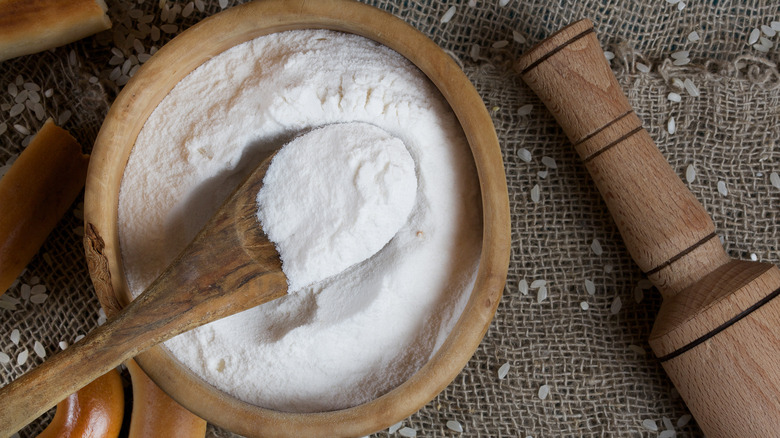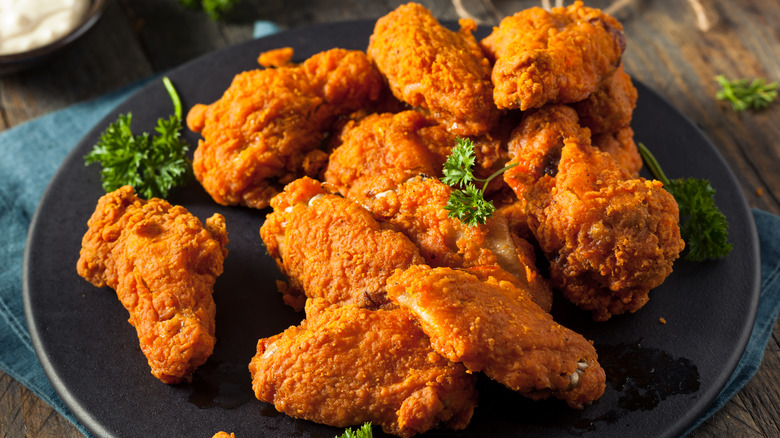For The Crispiest Fried Chicken, Use This Flour And Thank Us Later
Ah, the inescapable allure of the perfect fried chicken. We yearn for it, try one too many recipes to recreate it at home, and yet, things don't always turn out the way we hope. Luckily, that coveted crunchy texture isn't that difficult to attain. The key to the crispiest fried chicken often lies in the batter, and sometimes, you have to replace the basics with something new.
While there are many different types of flour to choose from, rice flour in particular deserves your undivided attention. First things first, rice flour is exactly what you think it is — a fine powder made of milled rice grains. Finely ground rice flour is light and has a smooth texture like cornstarch. A pantry staple in Asia, rice flour is often used for deep frying foods like Japanese karaage and Indian rice fritters.
While all-purpose flour is indispensable thanks to its myriad gastronomic applications, and it's commonly used to make batter for fried chicken, rice flour has several advantages including amplified crispiness, lighter coating, and less oil absorption. It's readily available in grocery stores in many varieties, but for fried chicken, choose white rice flour for its neutral flavor and finer texture. Brown rice flour works as well, and it adds a nutty flavor .
Rice flour keeps the moisture at bay
When you use all-purpose flour to make fried chicken, the coating is prone to getting soggy because all-purpose flour is made from wheat, and wheat is packed with proteins and gluten, both of which are hygroscopic in nature and love to soak up moisture from the environment (as well as the juices from the fried chicken). In fact, the protein/gluten in all-purpose flour could soak up about twice its weight in water. So if you've ever wondered why your fried chicken is crispy immediately after frying but gets soggy after a while, all-purpose flour is largely to blame.
Rice flour, on the other hand, is gluten-free and it doesn't attract moisture, so when you use it for deep frying, the chicken comes out crispy and stays that way for a longer time. Chicken fried with a coating made of rice flour batter can also stay crispy even when it's covered in sauce because it's less prone to absorb moisture from the sauce. Plus, because rice flour doesn't absorb as much moisture, this means it attracts less oil too. So your crispy fried chicken will come out less greasy with rice flour.
Frying chicken with rice flour
When substituting all-purpose flour with rice flour in any recipe, simply use a 1:1 ratio. Rice flour doesn't need to be supplemented with other starches or any all-purpose flour — it results in a light crispiness on its own. But if you want to crank up the crunch factor even more, just mix in some cornstarch with the rice flour at a 1:2 ratio.
To fry chicken coated in rice flour, use high smoke point oils like canola oil or vegetable oil. The ideal oil temperature to fry chicken is 250 degrees Fahrenheit, so use a thermometer to be precise. If you don't have a thermometer, drop a tiny bit of your rice flour batter into the oil, if it bounces back to the surface, sizzles, and crisps up quickly, the oil is hot enough. Whether you're using a deep-fryer, wok, or a pan, make sure to not overcrowd it to allow every piece of chicken the space it needs to cook evenly — and get brown and crispy.
If you're frying up a lot of chicken in batches, you can keep the chicken warm by placing it on a wire rack and keeping it in the oven at 250 degrees Fahrenheit. With rice flour, you can be sure it will stay crispy until you're ready to serve. Nothing should come between you and perfectly crispy fried chicken, so here are 13 mistakes to avoid when frying chicken.


